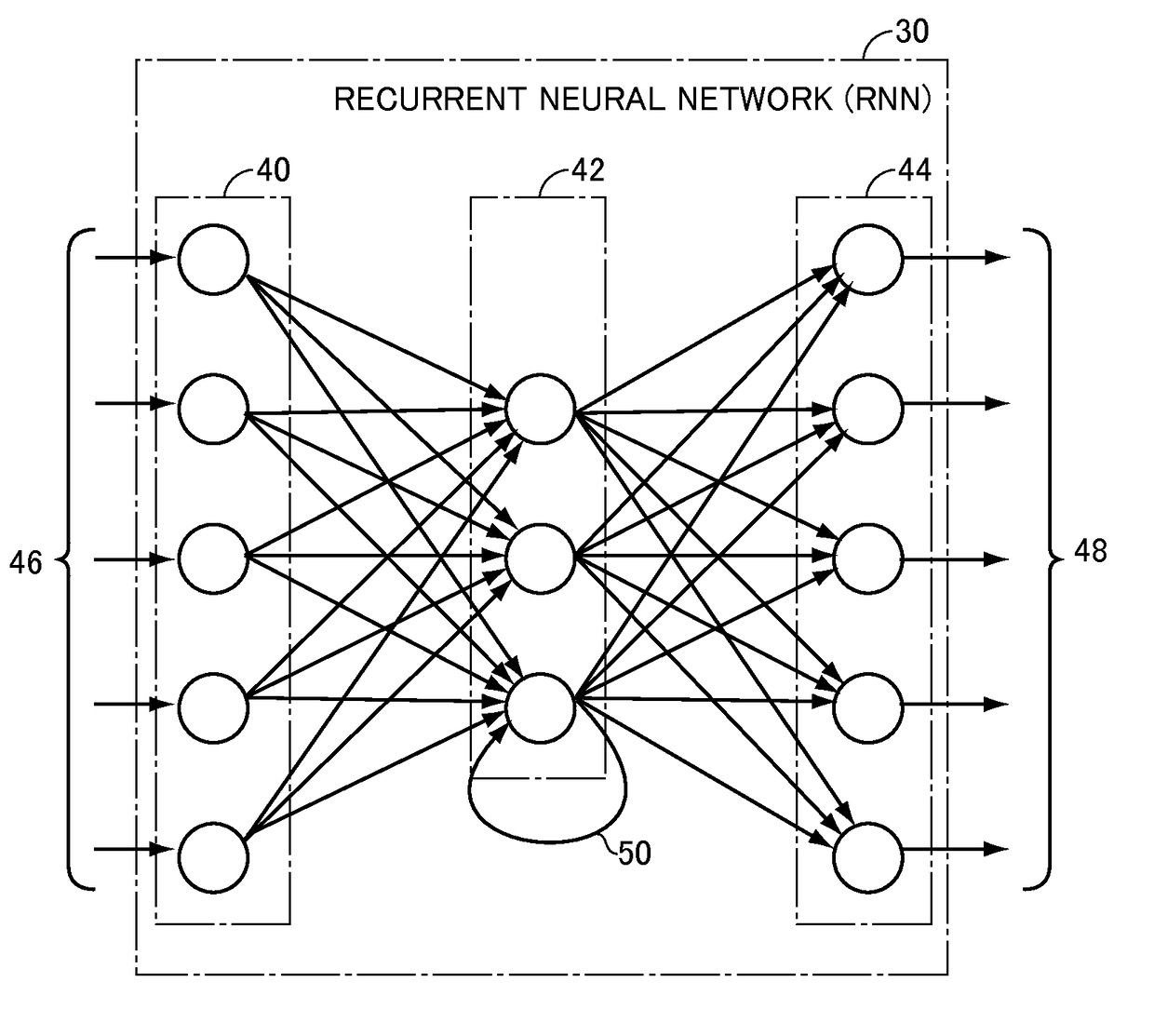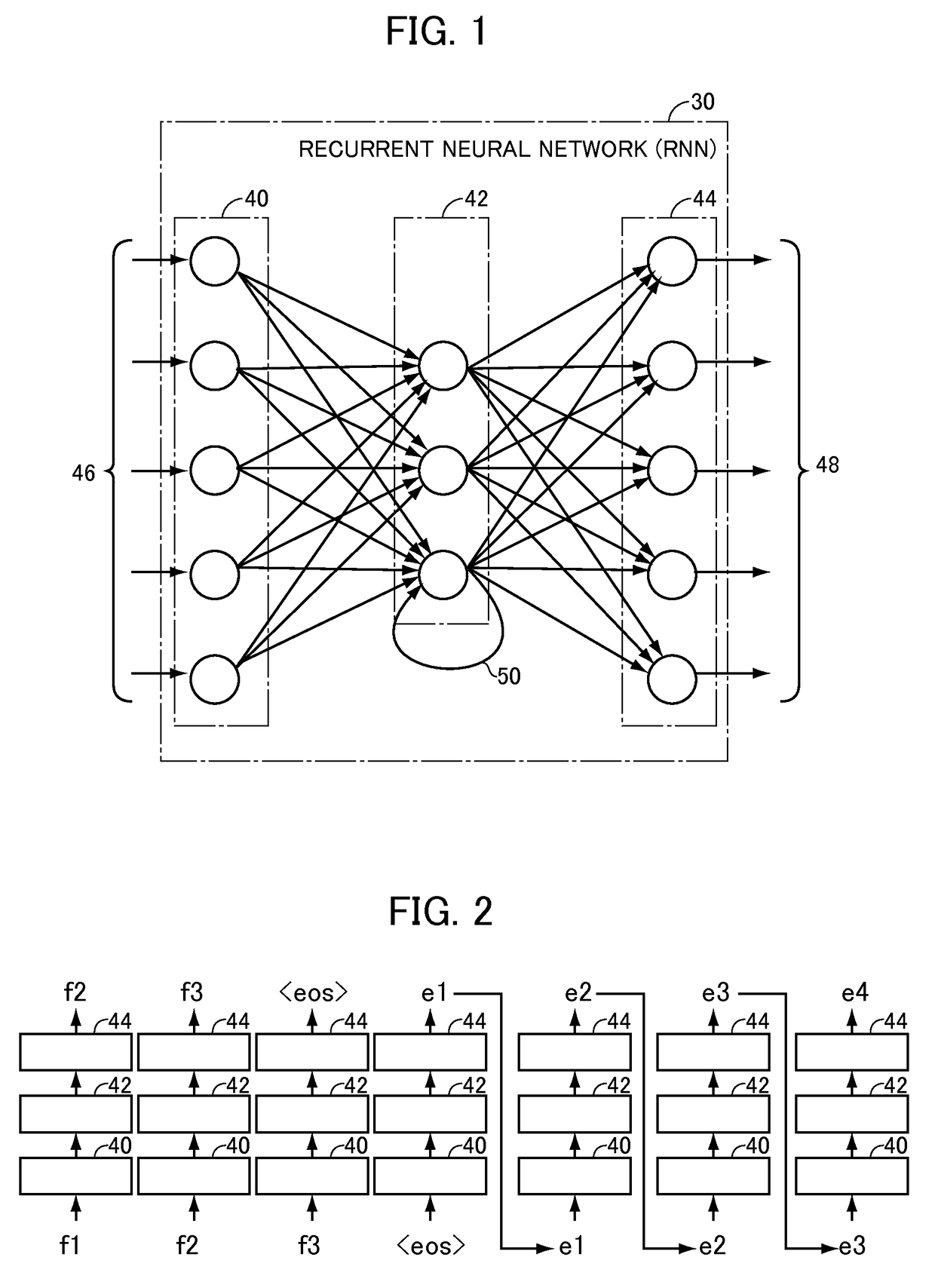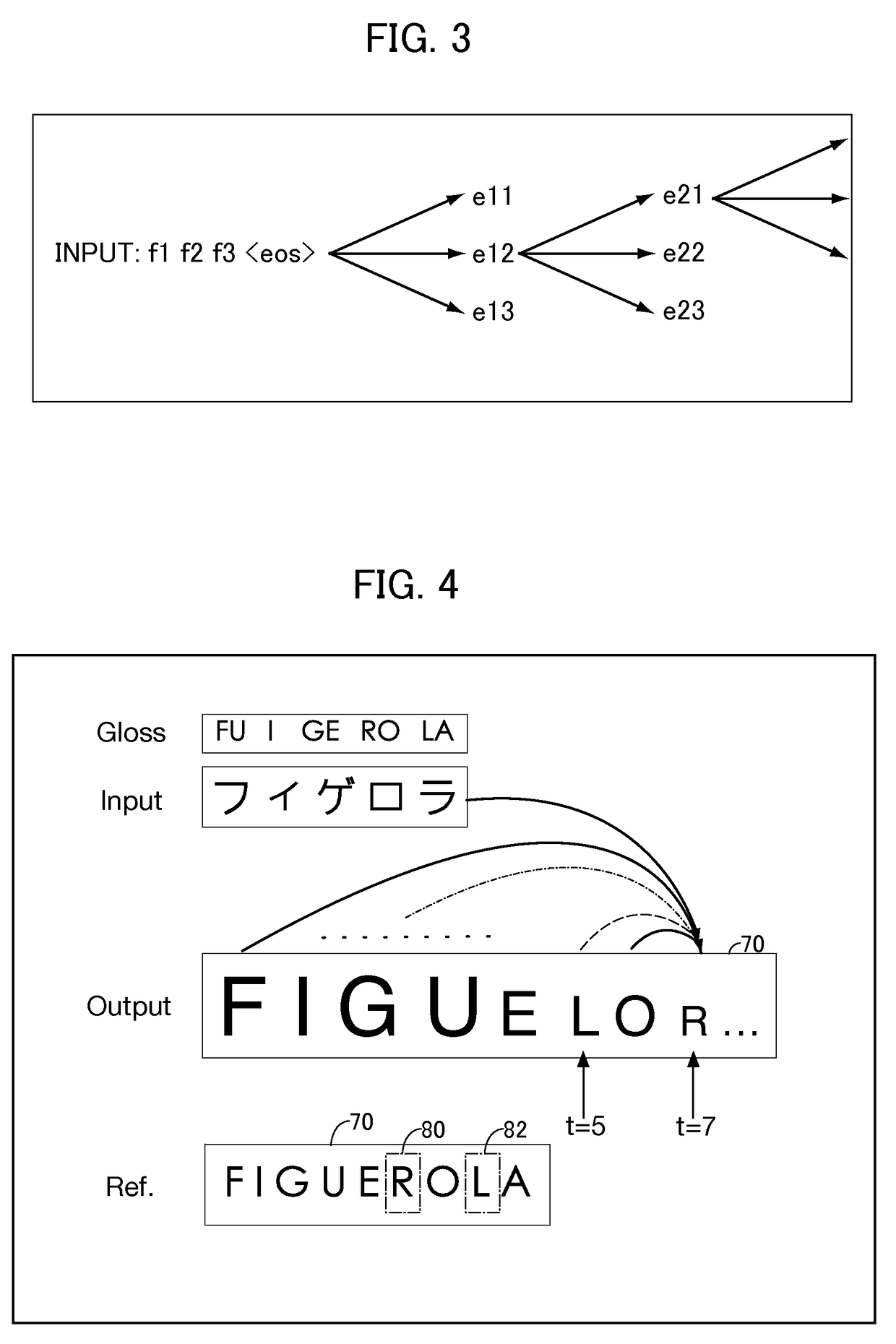Joint estimation method and method of training sequence-to-sequence model therefor
a recurrent neural network and joint estimation technology, applied in the field of sequence-to-sequence learning of recurrent neural networks, can solve the problems of limiting the potential of an rnn, lstm is more likely to generate an unbalanced sequence, and undermine the quality of subsequent estimations, so as to improve the performance of unidirectional elstm, improve the performance of elstm, and achieve greater advantage
- Summary
- Abstract
- Description
- Claims
- Application Information
AI Technical Summary
Benefits of technology
Problems solved by technology
Method used
Image
Examples
first embodiment
[0062]Referring to FIG. 5, a bidirectional learner 100 of the first embodiment of the present invention trains a left-to-right model 106 and right-to-left model 108, each of which is an LSTM using the source inputs 102 and target inputs 104. Each of the source sequences in source inputs 102 has a counterpart target sequences in target inputs 104. Each of these sequences has a symbol, which indicates the end of a sequence, appended at their ends.
[0063]Bidirectional learner 10 includes a left-to-right learning data generator 120 for generating a left-to-right learning sequences by concatenating each of the source sequences and its counterpart target sequences, a learner 122 for training left-to-right model 106 in the manner as described above with reference to FIG. 2. Bidirectional learner 100 further includes: a right-to-left learning data generator 124 for generating a right-to-left learning sequences by first inverting the order of each of the target inputs from left-to-right to r...
second embodiment
[0072]The second embodiment is directed to the polynomial approximation. Referring to FIG. 8, re-scorer 240 of the present embodiment can replace re-scorer 168 of the first embodiment shown in FIG. 7. Re-scorer 240 includes, in addition to the components of re-scorer 168 shown in FIG. 7, a concatenated candidate generator 260 for concatenating all possible combinations of prefixes and suffixes found in the k-best union, thereby creating a search space larger than that of the first embodiment. The output of concatenated candidate generator 260 is applied to scorer 202 and 204.
[0073]In this embodiment, the search space is substantially larger than that of the first embodiment; still, however, it is sufficiently small and the required computing amount is reasonably small.
third embodiment
[0074]The first embodiment and the second embodiment are directed to joint estimation using left-to-right and right-to-left models. The present invention is not limited to such embodiments. The right-to-left model may be replaced with any model that is trained with the permuted target sequence as long as the permutation G(x) has an inverse permutation H(x) such that e=H(G(e)). The third embodiment is directed to such a generalized version of the first and the second embodiments. Note that the permutation function may be different depending on the number of tokens in a sequence.
[0075]Referring to FIG. 9, in the learning step, source inputs f 250 and target inputs e are stored in a storage device not shown. A source input f and target input e make a pair. For each pair, target input e is subjected to a permutation step 256 where target input s is permutated by the permutation function G(e). Next, at the concatenation step 252, source input f and the permuted target input G(e) is conca...
PUM
 Login to View More
Login to View More Abstract
Description
Claims
Application Information
 Login to View More
Login to View More - R&D
- Intellectual Property
- Life Sciences
- Materials
- Tech Scout
- Unparalleled Data Quality
- Higher Quality Content
- 60% Fewer Hallucinations
Browse by: Latest US Patents, China's latest patents, Technical Efficacy Thesaurus, Application Domain, Technology Topic, Popular Technical Reports.
© 2025 PatSnap. All rights reserved.Legal|Privacy policy|Modern Slavery Act Transparency Statement|Sitemap|About US| Contact US: help@patsnap.com



